Minimalism, rightly or wrongly, is often associated with privileged individuals seeking to live a more intentional life. But what about busy parents with kids, or larger families in general? Is it really possible to be a minimalist family?
We can’t fully speak from experience as our family includes me, my wife and our dog, Chewy. We turned to our audience to get their insights, and they shared so much useful information and perspectives.
We surveyed a small group of individuals who are part of minimalist families, and here’s a quick summary of what we found:
- The greatest challenge when trying to cultivate a minimalist family is getting other family members on board. No surprises here.
- For most families, it takes 1-2 years to transition to a minimalist lifestyle.
In addition to these findings, we learned what motivated these folks to try minimalism, the benefits they experienced, and their best tips to help you transition.
Note: the average family size for the survey was four family members.
By learning from these case studies, we hope you feel inspired to apply minimalism to your family while also setting realistic expectations.
Let’s get into it.
This post may contain affiliate links, for which we earn a small commission at no additional cost to you. Read our full disclosure.
Why become a minimalist family?
For the average individual, doing the work of minimalism is easy to put on the “I’ll do it later” list.
Now throw in a chaotic family environment, with everyone having their own ideas, and the task of simplifying, decluttering and minimising becomes incredibly daunting.
You need tons of motivation to become a minimalist. So for the minimalist families in our audience, we wanted to know the moment that led them to adopt a minimalist lifestyle. What was the tipping point?
Below are eight reasons why these families decided to simplify.
Running out of space in the house
If you let it, clutter takes over your home, finding its way onto all your surfaces, floors, stifling your storage areas and taking away your space.
Think about the time lost looking for toys, clothes, or, god forbid, missing Tupperware lids. Or the potential injuries from tripping over or stepping on things or rushing through your day. Lego, anyone?
If that’s not bad enough, you struggle to find a dedicated storage space for it when you purchase something you need.
It’s a lot to be in each other’s personal space, and having clutter just amplifies the tension in your home.
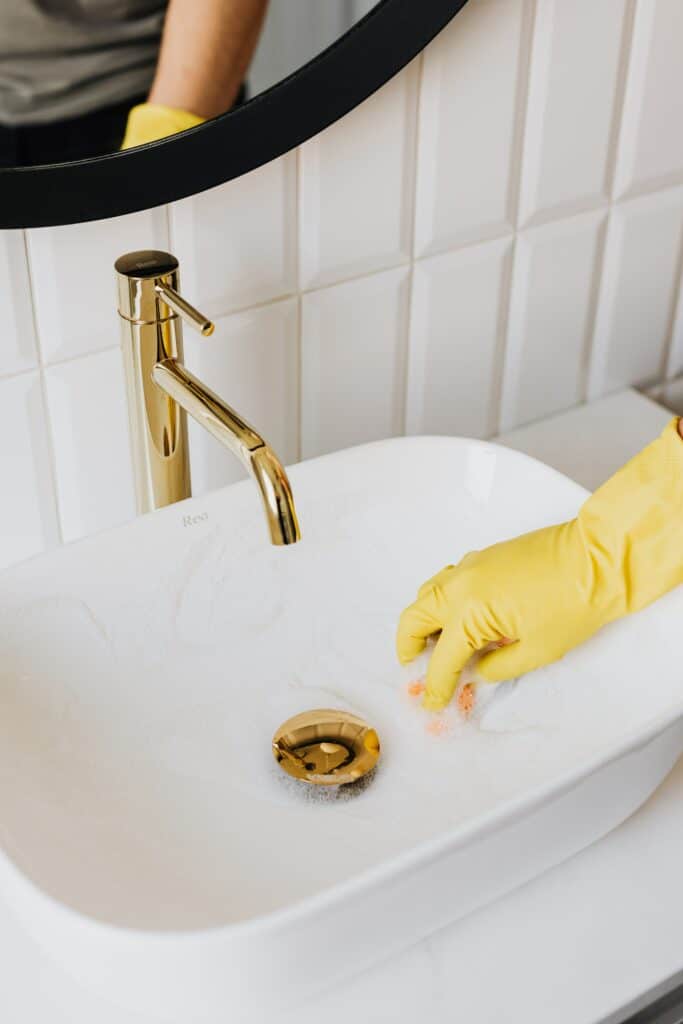
Health hazards leading to reducing chemicals in the house
If you’re sensitive to chemicals or dust, then maintaining a clutter-free family home is non-negotiable.
Interestingly, many of us may be sick and not realise it’s because of our clutter.
If you’re interested in learning about the potentially harmful chemicals in our things, check out the movie Stink! It’s a real eye-opener.
The recognition that there’s too much waste
A few respondents noted that too much waste and plastic in the house was the primary catalyst for creating a minimalist lifestyle for the family.
It’s confronting when you learn about how much waste households are generating, then look around to see your contribution.
Whether it’s food waste, plastic, or buying and trashing too many things—wanting and maintaining fewer items will help to reduce your footprint.
It was encouraging to see environmentalists adopting a minimalist lifestyle.
Moving houses
40% of the respondents noted that moving homes was their primary motivation to pair down and become a minimalist family.
This isn’t surprising as many of us are looking for a fresh start when moving properties. Moving means confronting all of your possessions and deciding what to keep and what to take with you.
Other factors that increase your motivation to minimise when moving is:
- The distance of your move. If you’re moving overseas, for example, then you’re incentivised to pair down to reduce transportation costs.
- Downsizing. For the minimalist, downsizing is no longer a word that describes retirees leaving their four-bedroom family home behind for a smaller property. Instead, downsizing is now an intentional decision at any point in your adult life to help keep the cost of living down, apply necessary constraints, or simply embrace going small.
More and more families opt to live on the road in vans, move into tiny houses, or live more nomadically to create different experiences.
Seeking to live a more agile lifestyle could provide inspiration for your family to try minimalism.
Having kids or becoming a carer
You might be thinking, “how does having children trigger a family to go minimalist?” Well, as it turns out, having unexpected kids can do that!
Instead of feeling the financial pressure of upsizing to a larger property, families opt to stay put and make their current homes work. So minimalism is applied out of necessity in these situations to maximise space for new family members.
The same line of thinking applies to folks who unexpectedly fall into a carer role for an ailing family member.

Less time to think about things and more time together
Stuff not only takes up physical space in our lives, but it also occupies time and mental energy.
Many families said that they wanted to use minimalism to reduce time cleaning and maintaining things to spend more quality time together sharing experiences.
Reading about minimalism
Most folks aren’t aware of minimalism and the benefits. It’s not until you learn about minimalist living do you start to shift your mindset around consumerism.
So for some families, it was reading about other people transitioning their families to minimalism that inspired them to take action.
Seeing friends become minimalists
Following on from the previous point of drawing inspiration from content, some families were influenced by seeing their friends transition to a minimalist family home.
Sometimes you need to see it first hand to believe it’s possible.
What are the greatest challenges when trying to become a minimalist family?
Now that we understand the reasons for becoming a minimalist household, what are the biggest obstacles to getting there?
In this case study, we got respondents to select the challenges that applied to them. Let’s look at the results.
- 34% said time constraints is the greatest challenge to becoming a minimalist family.
- 25% didn’t know where to start
- 25% of families felt overwhelmed
- 57% said that getting other family members on board was the greatest challenge
Note: participants could select multiple answers.
The last number is especially interesting. It makes sense that if you, dear reader, are the mother in your home, you’re feeling ready to make the change to minimalism but are having challenges trying to sell it to your spouse and kids.
This is particularly difficult if your partner doesn’t want to be a minimalist and therefore lacks the support to make the change.
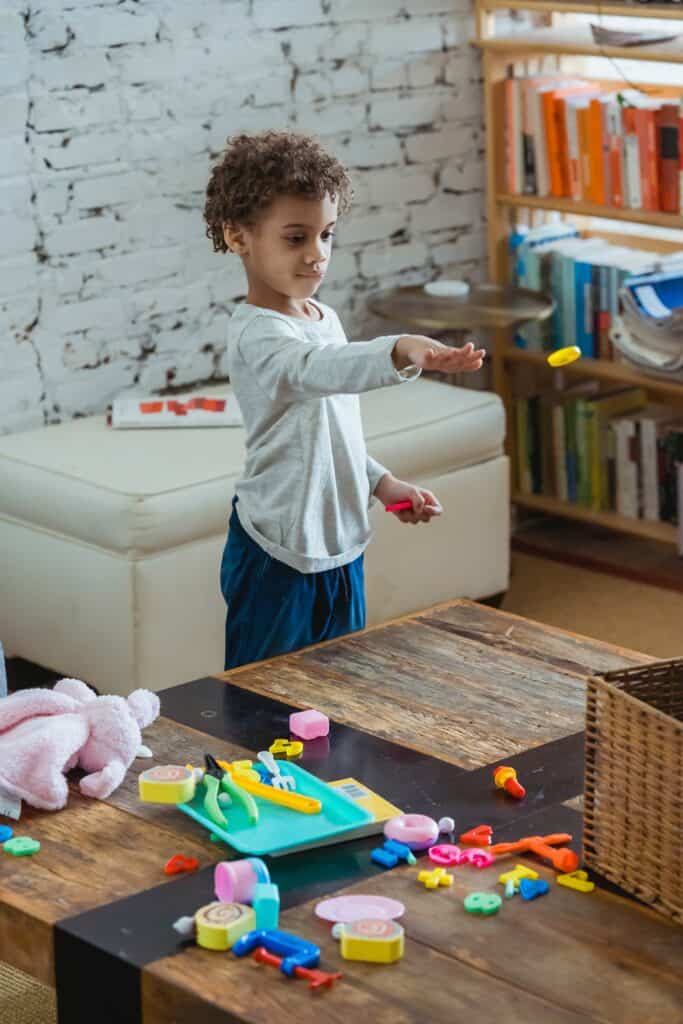
What are the top actions you can take as a family to create a minimalist home?
Everyone’s family situation is unique, and your results will come down to how you adapt to your environment.
We’ve summarised 22 tips based on the experiences of the minimalist families who participated in this study.
Hopefully, with the diversity of the responses, you’ll be able to pick a few ideas to apply to your situation.
- Examine your shopping habits. The root cause of your family clutter comes from all the things you bring in. So get on top of your shopping behaviour, and you’ve already won half of the battle.
- Start small and build momentum. Most families are time poor (which we’re hoping to change with minimalism), so racing to the finish line is likely not feasible for you. Instead, break up your efforts into small steps. For example, as a family, try dedicating 30 minutes a day to minimalism and celebrate your progress, no matter how small.
- Keep communication up. Communication is essential for achieving a common goal in any relationship, and it’s no different for minimalism. You want everyone to feel some ownership in your minimalist family transition. Specifically, this means asking for feedback and suggestions, uncovering concerns, or setting a clear plan. Don’t just rely on verbal communication, either. Write down family commitments on a whiteboard or butcher’s paper and pin them on the back of the toilet door or fridge. Play inspiring videos of minimalist families on YouTube in the background. Get creative with your communication efforts.
- Reduce the number of toys but improve the quality. Minimising toys is always going to be a quick win for minimalist households. But instead of just reducing the amount, also improve the quality of some of their toys. Quality doesn’t necessarily mean more expensive or more durable, but more meaningful toys—or you can get a lot of use out of them.
- Shifting home decor to kids artwork. I was surprised to see the level of creativity in this suggestion. This particular family had replaced the majority of their home decor with their kid’s creations including Christmas decorations. DIY is not an approach for everyone, but this is an excellent way to replace material possessions with creativity in your home if you’re a crafty family.
- Join the toy library. I hadn’t heard of a toy library until reading the responses from our audience. It’s a super inexpensive way to rent toys for your kids and also try out certain items before you decide to buy them. A toy library is good from a minimalist perspective, as it encourages your children to look after their borrowed toys and reduces toy waste—tick and tick. To see if you have a toy library in your city, just google “toy library near me”.
- Stopped holding onto gifts. Managing gifts as a minimalist is not easy. It might be someone’s love language to put time, effort and money into giving you the perfect gift. So it’s understandable how awkward it is for you to let family know gifts are no longer essential to you. On the flip side, holding onto items you don’t use takes precious space in your home. Re-gifting, especially for things you received many years ago, shouldn’t get you in trouble. What’s critical is reducing the number of gifts coming into your life but setting clear expectations with your friends and family. More on that coming up.
- Focus on experience over possessions. It can be difficult to change from a consumer-based, capitalist mindset to a more spiritual outlook. Modern culture has the tendency to focus on possessions rather than experiences, and this is a problem. Families in the survey repeatedly mentioned how they shifted focus away from buying things to re-investing time and money into enriching experiences, particularly spending more time outdoors. The whole family could look back and remember the special moment they shared together.
- Apply the one in one out rule. The one in one out rule is a system of refusing to consume more than what you’re currently consuming. This was one of the most consistent suggestions from the survey, especially when managing kids toys. Think about taking inventory of your things, and every time a family member requests a new item within a category, an existing item needs to go. Translation—no more running out of hangers for clothes or overflowing storage spaces.
- Tone down birthdays and holidays. It’s hard to have a low-key birthday or Christmas when advertising, movies, TV shows and other families in your community celebrate the heck out of these events with gifts. Minimalism is a tool to block out the noise and define how your family wants to celebrate these special occasions. Perhaps it’s time to pull back and be open with your family about money and what it means. If needed, set some boundaries into how many gifts each person receives. Perhaps one gift policy per person? Or again, see if you can replace the gift-giving part of these events with a fun experience.
- Use multipurpose items. Whether it’s cleaning supplies, toys or kitchen items, multipurpose products increase effectiveness while also saving space within a minimalist household. So it’s no wonder why parents from our survey are obsessed with multi-use things.
- Allocate a home for everything. It’s almost a right of passage for minimalist families to channel their inner Marie Kondo and ensure that everything you own has a dedicated home. Staying organised, as hard as it may be, is crucial for keeping order and simplicity.
“We keep their toys, books, art supplies and sports equipment organised so that they can find what they want to play with or read in its known spot, rather than whining that they can’t find a specific item, so there’s “nothing to do”.” – Reader.
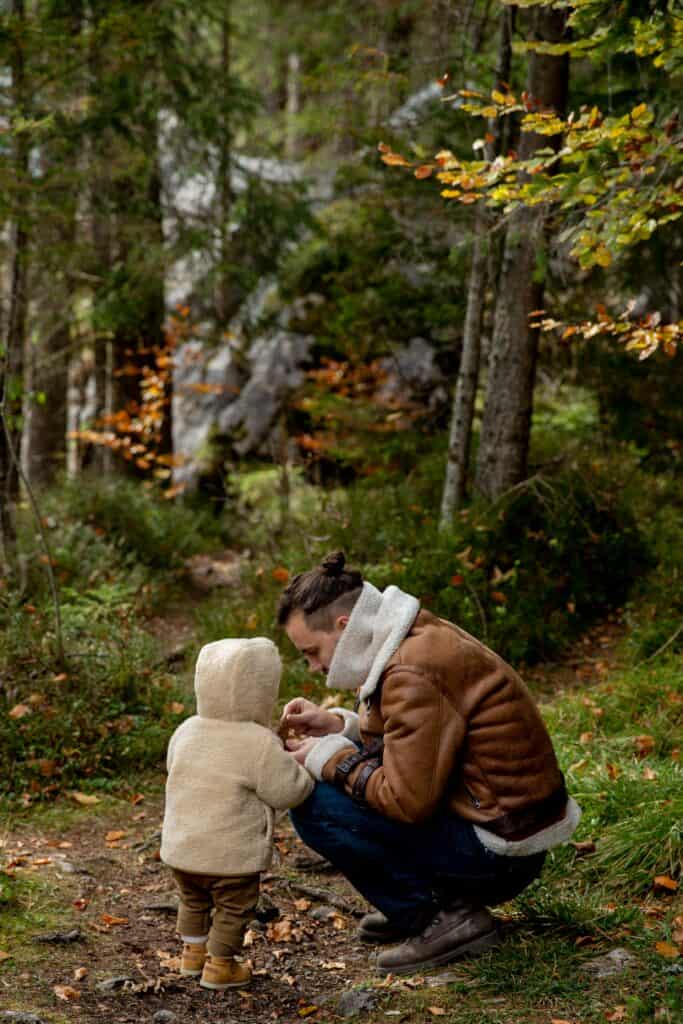
- Trading time instead of things. Earlier, we talked about the value of swapping experiences for things, but when you don’t have the option (cough, COVID), then you may need to trade your time instead. Your kids would trade almost anything to spend time playing with you outside for an hour.
- Buy second hand. Purchasing things second-hand doesn’t make you a minimalist. In fact, it can have quite the opposite effect if you get trapped bargain hunting. However, thrifting toys, books and clothes then re-donating them when you’re done can help save money while also limiting the number of new things you’re bringing into your home.
- Setting up a shopping station for hand-me-downs. Family hand-me-downs are a regular practice in family households. One of our readers took it up a level and made an effort to nicely pack away and present quality items older kids no longer wanted. Then when there was a need for a younger sibling to buy something, the rule is to shop at the hand-me-down station first. I think it’s a fantastic idea to make hand-me-downs “cool” to entice further use of your things.
- Move into a smaller home. While intentionally downsizing may seem a little extreme, revisiting what is “enough” for a traditional family home is invaluable. Living in a smaller space is the most effective way to minimise your things. For example, you don’t have a choice but to be ruthless with your possessions if you live in a small property with a family of four. You also save a ton of money by downsizing, freeing up your capacity to pursue exciting family experiences.
- Minimise kitchen items. Kitchens are one of the most highly trafficked spaces in a family home and are susceptible to clutter. Some families have kept a lean kitchen by having one set of plates, bowls, glasses, mugs and cutlery per family member. By creating a minimalist kitchen, you free up your storage and surfaces, and as a nice aside, folks need to be timely when cleaning dishes if they want something to eat with 🙂
- Buy food in bulk. By purchasing food in bulk, some families reported that it created an order in the kitchen. For instance, keeping labelled glass jars in the pantry made it easier for everyone to know what food was running low and get the family to think about what ingredients are essential—thus reducing waste by not overshopping.
- Purchase things slowly. Easing up on instant gratification, especially with kids and teenagers, is a helpful way to break the consumerist cycle. Rather than purchasing quickly, adopt a philosophy of slow purchasing. Use wishlists and take your time researching the best options. By slowing down the buying process, you limit impulsive urges and allow your family to plan for what will happen at the end of its lifecycle.
- Stop browsing. Families mentioned that they used to kill time in malls browsing products with their kids, even if they didn’t need anything. This would often lead to unnecessary purchases, or at the very least, it would create a desire to want more in the future. So just the act of stopping the habit of browsing (online shopping included) reduces the temptation to buy more things. So next time you think about browsing, perhaps replace that time with a walk in the park.
- Politely refusing things you don’t need. It’s one of the kindest gestures for friends and family to offer you something for free. However, if you’re repeatedly given things you don’t need, then you’re in trouble. You end up with a graveyard of stuff you have no use for or you thought you did, but meanwhile, it continues to collect dust in the garage. By refusing these offers (with love) upfront, this one quick interaction will save you decisions and time down the road.
- Box up things you’re not sure about. If you’re unsure whether you should let go of something, store it away for the next month and see if you find yourself reaching for it. If you don’t, then you have a strong case for getting rid of it. This is particularly effective with your kid’s things. One reader even hid away toys their kids weren’t using to see if they would ask for it, haha! That’s minimalist parenting for you 🙂
How long does it take to become a minimalist family?
After reading to this point, you might be wondering just how long it takes to transition your family to a minimalist lifestyle. Here’s what we found:
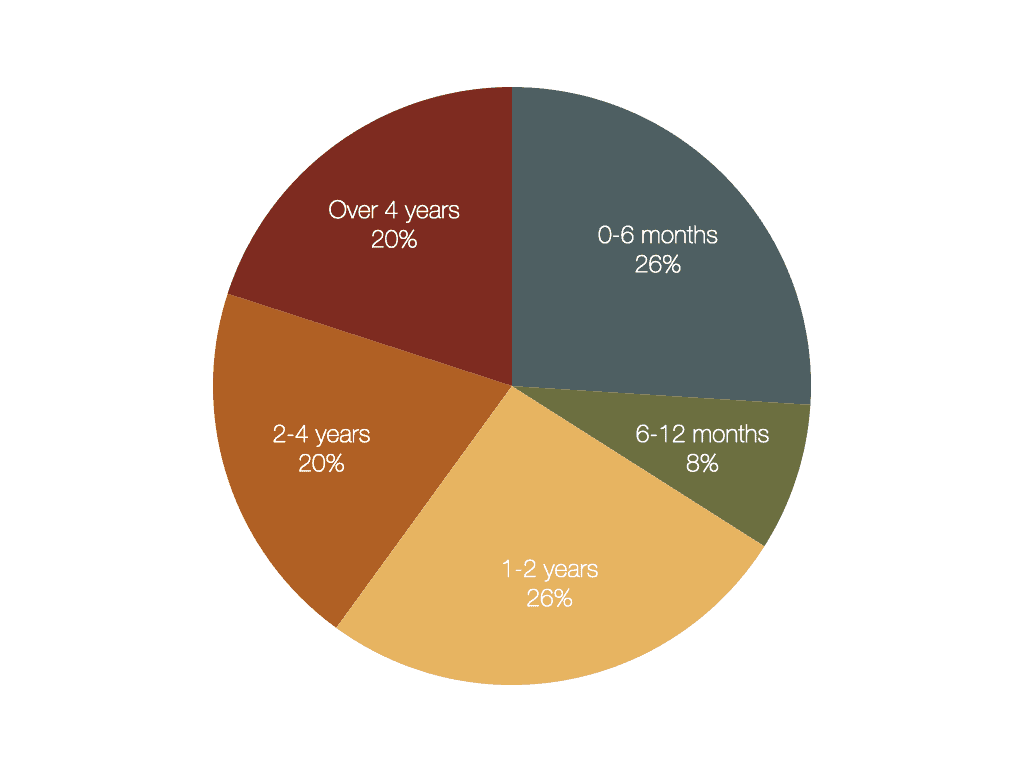
The transition period for becoming a minimalist family is evenly spread, with the most common timeframes being under 6 months and 1-2 years.
Regrets from minimalist families
We asked the group of minimalist families if there was anything they would’ve done differently. The idea is that we can gather insights on some potential shortcuts for when you start your minimalist journey. Take a look at the key takeaways from our responses.
Regret #1 – “I wish I started earlier.”
Done sooner, started sooner. This was by far the most prominent regret from the group. The sooner we minimise things in our lives, the sooner we can save money, free up time and pursue meaningful experiences.
Yet, the work of minimalism is something we put off. If there’s one thing you can take away from the participants in this case study, it’s to start today. Otherwise, it’s likely you’ll end up regretting you didn’t begin earlier.
Regret #2 – “I wish we had started before our kids were born or when they were younger.”
Starting sooner is one thing; however, beginning your minimalist transition before having kids is even more critical. Here’s what one of the mums suggested:
“Start earlier when the kids are too little to argue or be devastated about giving things up. Set the expectation of “less stuff” from the start.”
We also saw that transitioning to minimalism with teenagers was much harder. So if you can, try to establish a minimalist culture in your home before you have kids or when they’re younger, so it becomes the norm.
Regret #3 – “I wish I could spend more time curating my own things.”
This comment hit me hard. As parents, you spend so much time trying to do what’s best for your family that you can easily neglect your own needs and experiences.
As you’re helping your family transition, be sure to make time for personal activities like creating a capsule wardrobe or personal uniform or designing a calendar schedule with more white space so you can take on some projects that light you up.
Regret #4 – “I wish I was more aggressive when getting rid of things.”
Purging your things can be an intimidating task. How far is too far? This is a valid concern.
Yet, every time I think I’ve cleared “enough”, I learn that I grow and change, and even six months later, something that had value is no longer essential.
Minimalism means asking yourself what really matters. If you can get to the core of that question, you’d be surprised just how many things you’re hanging onto that are holding you back.
Regret #5 – “I wish I gave more reassurance to other family members about minimalism.”
As discussed earlier, the number one challenge for minimalist family living is to get everyone on the same page.
If your kids, husband, wife, sibling or parent are open to minimalism but not entirely as invested as you, they need reassurance and emotional support. So be patient, positive and encouraging, without being pushy. Easier said than done, I know!
If you don’t handle the transition with empathy, your family might be left feeling deprived instead of empowered, missing the whole point of minimalism.
What’s your experience with minimalism in a family environment?
Thank you to all of the families who participated in our case study. Now we’d like to hear from you. Any benefits, challenges or tips you’ve learned since becoming a minimalist family? Let us know in the comments below.

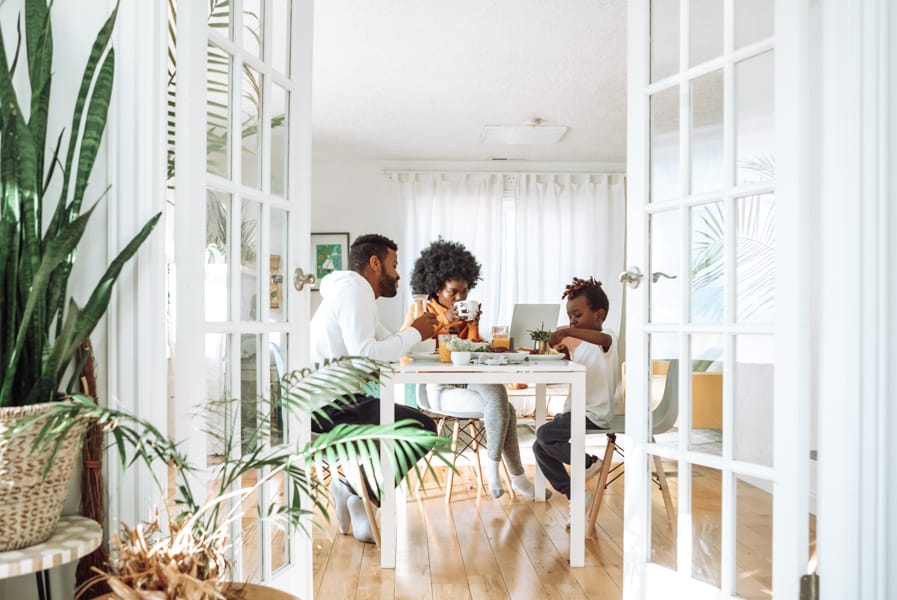
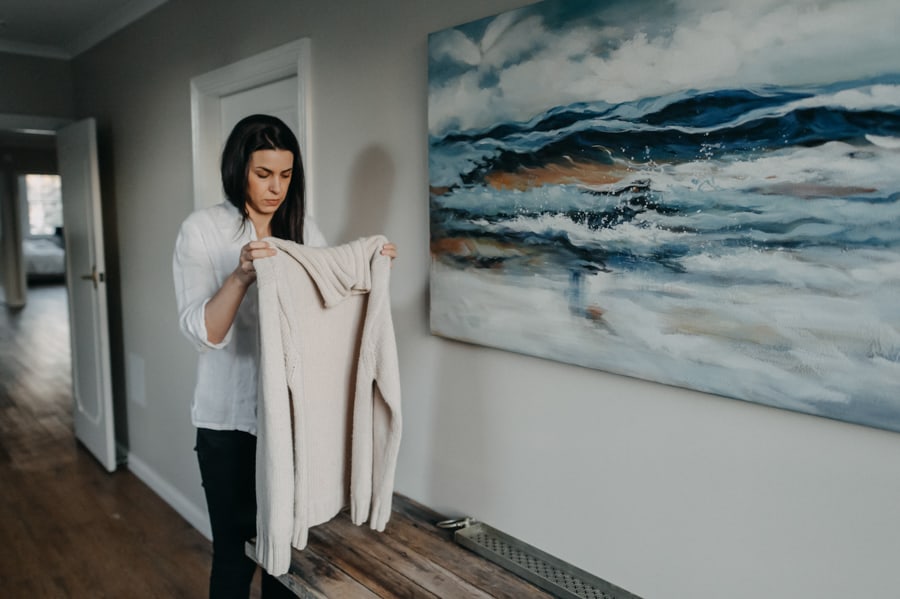
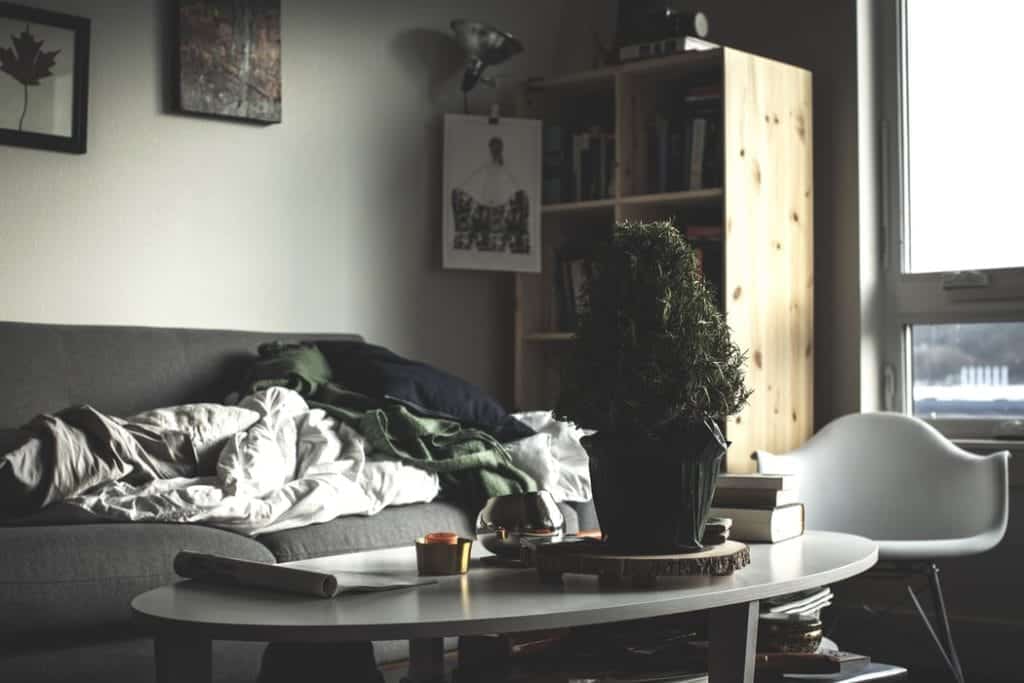


Love this. One thing that stood out for me is the thought of minimizing the accumulation of toys, while make the quality better. I know lots of people can agree that clutter is overwhelming to the senses. So just imagine the effects this has on little minds! This is why I am such a strong proponent of giving children experiences as gifts opposed to items. Less clutter at home while giving children quality time and long lasting memories that will be cherished. Win-Win!
🙂
Thank you Michael,
I like that you started with is the number one take away being ‘I wish I started earlier.’
I also really appreciate the insight that after a major decluttering, notice how your life has changed. What matters? What feels good to let go of now?
I am 75 and beginning a new life. More yoga, mantra, international travel and service that makes my heart sing.
Thank you,
Catherine
My pleasure Catherine. It’s always intriguing to see tangible examples.
Your new life sounds terrific. Thanks for taking the time to leave a comment.